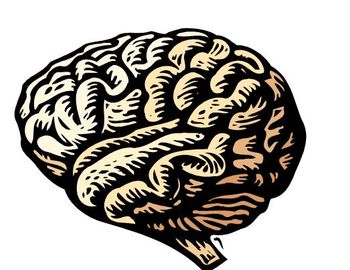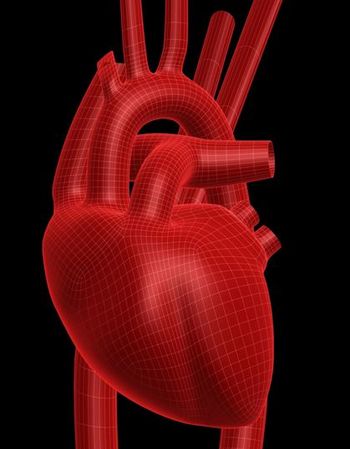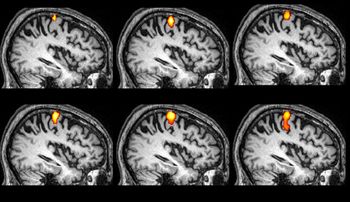
Results of a recent study suggest the presence or absence of CMBs may help refine risk prognostication in patients with AF.

Results of a recent study suggest the presence or absence of CMBs may help refine risk prognostication in patients with AF.

The cost vs the benefit of community screening for disease is often hotly debated. A new study suggests that detection and treatment of asymptomatic AF may be worth that effort.

Lone atrial fibrillation describes isolated episodes of AF that have been previously considered benign. A revised picture is emerging, according to a new study.

A very large observational study heightens concern around use of digoxin in the treatment of newly diagnosed atrial fibrillation, despite guideline recommendations.

A new study identifies obesity and inactivity as independent risk factors for atrial fibrillation in postmenopausal women. Exercise attenuated the risk in the study cohort.

A very large Swedish study and meta-analysis found a dose-response relationship between incident atrial fibrillation and alcohol, with an approximate 8% increase in risk for the arrhythmia per daily drink consumed.

High-sensitivity troponin T and N-terminal-pro-BNP were shown in 2 important studies to help predict risk of stroke and embolic events in patients with atrial fibrillation.

In a proof-of-principle study, German researchers evaluated an affordable, accessible, and cost-effective way to help diagnose atrial fibrillation after ischemic stroke, with promising results.

This patient's presenting symptom, in the context of his overall health, should prompt orders for which follow-up studies?

A recent study found the lower cost to be the result of fewer episodes of major bleeding in patients treated with apixaban.

Post hoc analysis of the ENGAGE AF-TIMI 48 study looked at safety and efficacy of a novel oral anticoagulant in distinct groups with paroxysmal, persistent, or permanent atrial fibrillation.

A new study finds that ablation for atrial flutter reduces hospital-based costs, symptoms, and risk of atrial fibrillation. For stroke risk? Continue anticoagulation.

Lower blood pressure may be one dividend of an all-vegetarian diet, according to a recent meta-analysis.

A meta-analysis shows both IV and oral formulations pose a risk of arrhythmia, the former more so than the latter. But these are very effective drugs. What next?

Results from the CRYSTAL-AF study find that nearly one-third of patients who experience cryptogenic stroke may have undetected atrial fibrillation.

A recent white paper declares it time to abolish the ambiguous term. Given current knowledge of atrial fibrillation, the 60-year-old description serves only to confuse.

The United States Preventive Services Task Force narrows recommendations for populations that warrant screening. Guideline revisions are based on a new evidence review.

Aging baby boomers will more frequently appear in primary care offices with cardiovascular diseases that place them at high risk for both clotting and bleeding. Many will also have atrial fibrillation. Is there a sure-fire therapeutic formula for all?

In a clinical trial setting, performance of the new oral anticoagulant and the long-time gold standard was similar. In the real world, where adherence can be a problem, there is a risk/benefit ratio to consider.

Warfarin continued in the periprocedural period yielded lower rates of stroke, TIA, and minor bleeding than use of heparin to bridge catheter ablation surgery for AF.

An extensive meta-analysis calls into question the standard practice of switching from an ACEI to an ARB in patients with type 2 diabetes.

The exact mechanism responsible for this effect is still open for debate. A salutatory side effect of the news may be the impact on medication adherence among men with both elevated LDL-C and erectile dysfunction.

A small study provides good evidence that radiofrequency ablation as first-line therapy has a lower failure rate vis a vis recurrence of AF when compared with antiarrhythmic therapy. But, there is more to this story.

According to a study published in the British Medical Journal, the risk of atrial fibrillation/atrial flutter is greater in NSAID-naive patients than in those with previous exposure.

Four updates to the guidelines are important for primary care physicians to review.

A wide-ranging meta-alaysis found that brief, intense outbursts of anger triggered onset of acute myocardial infarction, acute coronary syndrome, and dangerous ventricular arrhythmias.

The authors investigated changes in specific proinflammatory genes associated with neutrophil activation in patients with known coronary artery disease or with significant risk factors.

In clinical scenarios where warfarin is still the drug of choice for anticoagulation, it is still a challenge to achieve optimal time in therapeutic range. Is there promise in a new dosing paradigm?

Results of a new study suggest that number of LAA lobes may one day be useful as an element of the CHADS2 scoring system for embolic risk in patients with atrial fibrillation.

Comprising 15,400 patients from 46 countries, the RE-LY AF registry offers a notable opportunity to study variations in presentation of atrial fibrillation and its risk factors.